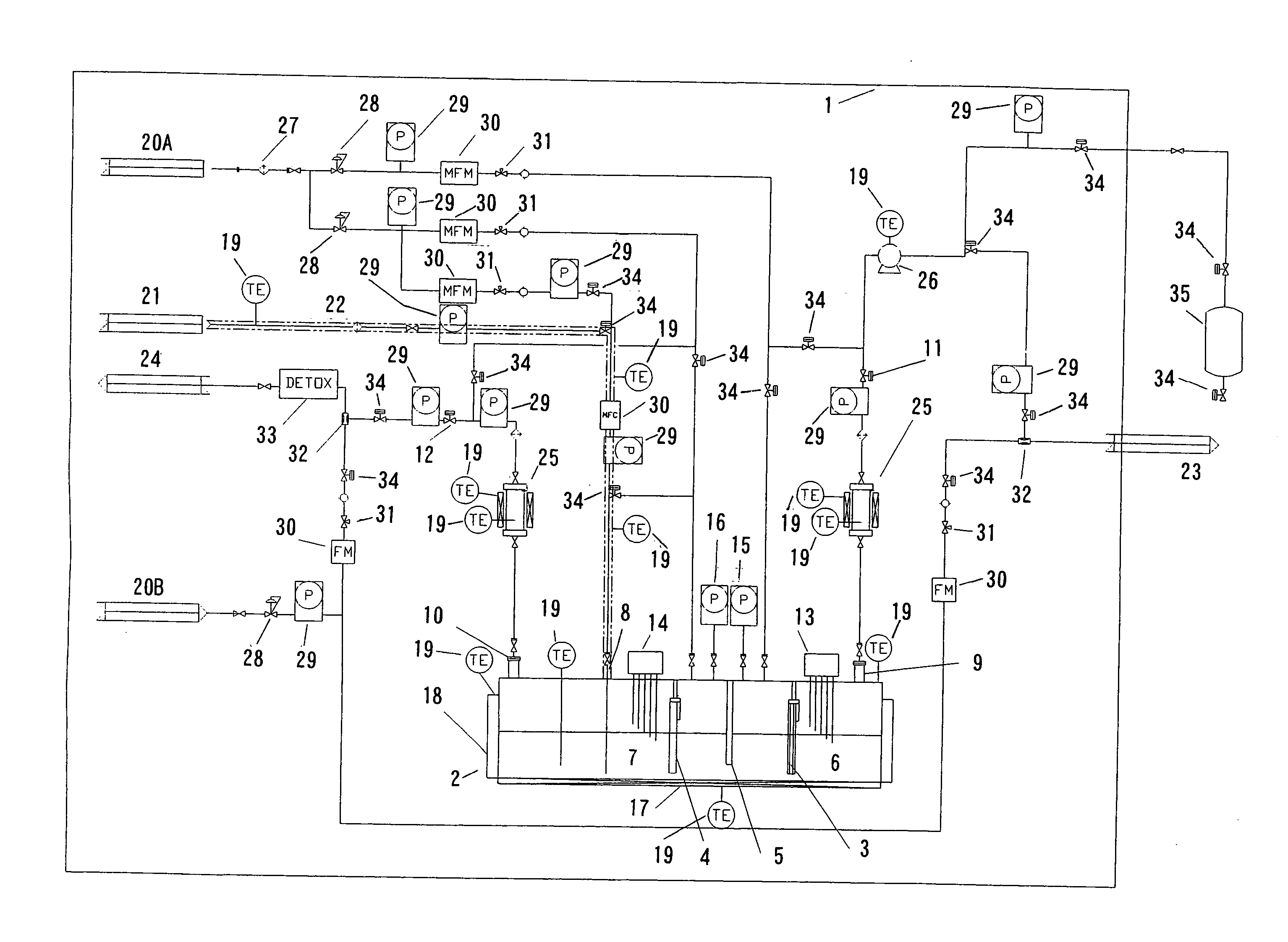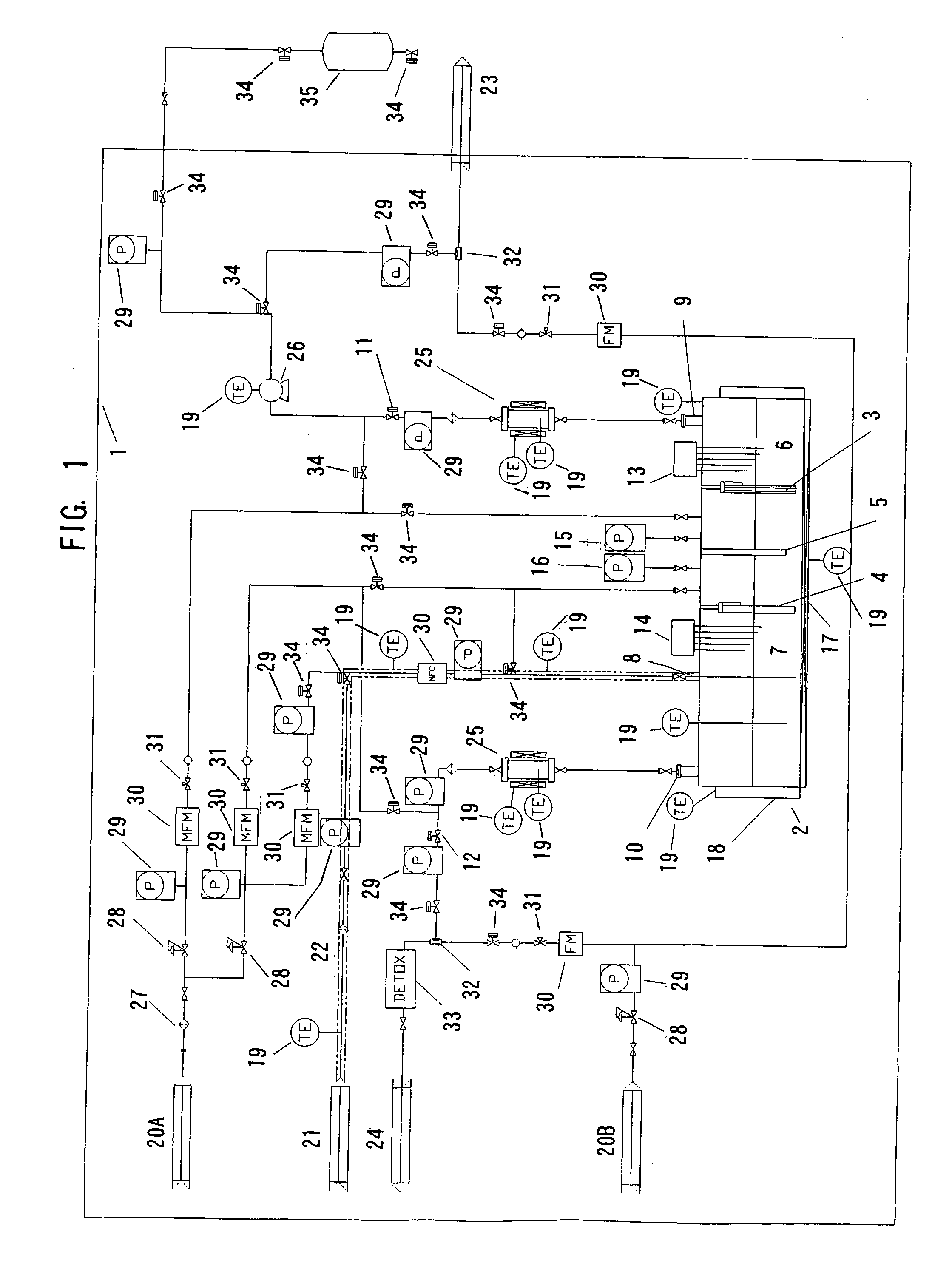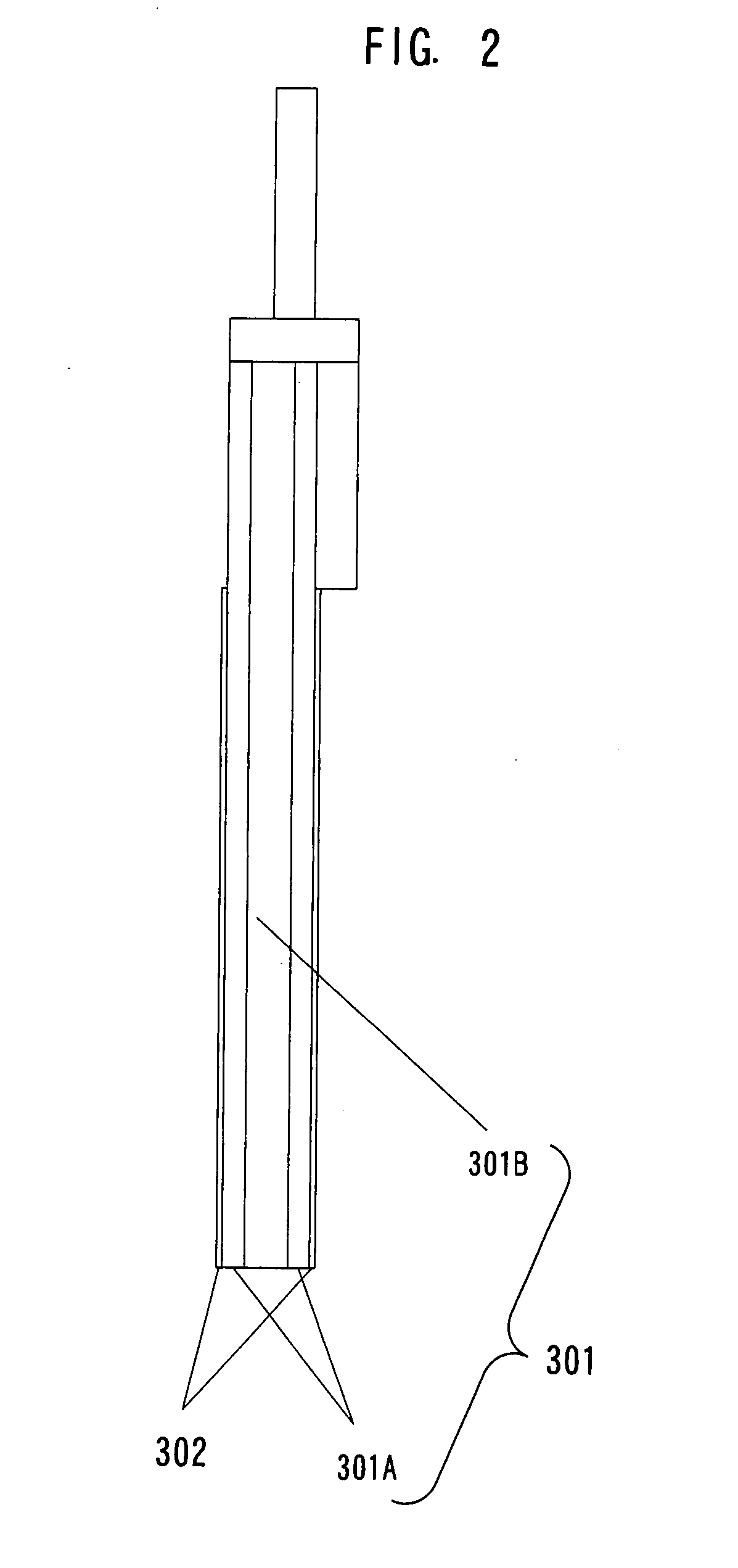Electrolytic apparatus for producing fluorine or nitrogen trifluoride
a technology of electrolysis apparatus and fluorine, which is applied in the direction of electrode coating, separation process, machining electric circuit, etc., to achieve the effect of suppressing the amount of carbon tetrafluoride generated and preventing the generation of sludge due to electrode erosion
- Summary
- Abstract
- Description
- Claims
- Application Information
AI Technical Summary
Benefits of technology
Problems solved by technology
Method used
Image
Examples
example 1
[0261] Using a graphite plate (size: 200 mm×250 mm×20 mm) as a conductive substrate, a conductive diamond-coated electrode was produced as follows, using a hot filament CVD apparatus (which was produced in accordance with the method described in non-Patent Document 3).
[0262] The whole area of each of the opposite broad surfaces of the conductive substrate was polished using diamond particles having a particle diameter of 1 μm as an abrasive. After polishing, the arithmetic mean roughness (Ra) of the surface of the conductive substrate and the maximum height (Rz) of the surface profile of the conductive substrate became 0.2 μm and 6 μm, respectively. Subsequently, diamond particles having a particle diameter of 4 nm were attached to the whole area of each of the opposite broad surfaces of the conductive substrate. The resultant substrate was placed in the hot filament CVD apparatus. A gaseous mixture which was hydrogen gas containing 1% by volume of methane gas and 0.5 ppm of trimet...
example 2
[0276] An electrolysis was performed in substantially the same manner as in Example 1, except that a fresh HF-containing molten salt of an NH4F-2HF system was used as the electrolysis liquid, that hydrogen fluoride (HF) and ammonia (NH3) were used as raw materials for the electrolysis liquid which were fed from the inlet during the electrolysis, and that the molar ratio of hydrogen fluoride (HF) contained in the HF-containing molten salt to ammonium fluoride (NH4F) contained in the HF-containing molten salt was maintained at 2.
[0277] The gas produced at the anode was withdrawn from the electrolytic cell through the anode gas outlet by using a pressurizing apparatus. The gas produced at the cathode was withdrawn from the electrolytic cell through the cathode gas outlet, and the withdrawn gas was mixed with nitrogen gas to dilute the withdrawn gas, followed by discharging the resultant diluted gas into the air.
[0278] As a result of the electrolysis, gaseous nitrogen trifluoride was ...
example 3
[0283] An electrolytic apparatus was produced in substantially the same manner as in Example 1, except that the ratio of the horizontal cross-sectional area of the cathode chamber to the horizontal cross-sectional area of the anode chamber was 0.5. Using the produced electrolytic cell, an electrolysis was performed. Specifically, a fresh hydrogen fluoride-containing molten salt of a KF-2HF system was charged into the electrolytic cell as an electrolysis liquid, and the electrolysis was performed under conditions wherein the electric current was 1,000 A and the applied current density was 125 A / dm2. On the first day, the electrolysis was successfully continued as in Example 1, and a gaseous product was obtained. However, on the second day, the safety circuit operated due to the detection of an unusual rise in the cathode chamber liquid surface by the cathode chamber liquid surface detecting means and, as a result, the operation of the electrolytic apparatus was terminated and the ele...
PUM
| Property | Measurement | Unit |
|---|---|---|
| Current density | aaaaa | aaaaa |
| Current density | aaaaa | aaaaa |
| Temperature | aaaaa | aaaaa |
Abstract
Description
Claims
Application Information
 Login to View More
Login to View More - R&D
- Intellectual Property
- Life Sciences
- Materials
- Tech Scout
- Unparalleled Data Quality
- Higher Quality Content
- 60% Fewer Hallucinations
Browse by: Latest US Patents, China's latest patents, Technical Efficacy Thesaurus, Application Domain, Technology Topic, Popular Technical Reports.
© 2025 PatSnap. All rights reserved.Legal|Privacy policy|Modern Slavery Act Transparency Statement|Sitemap|About US| Contact US: help@patsnap.com



